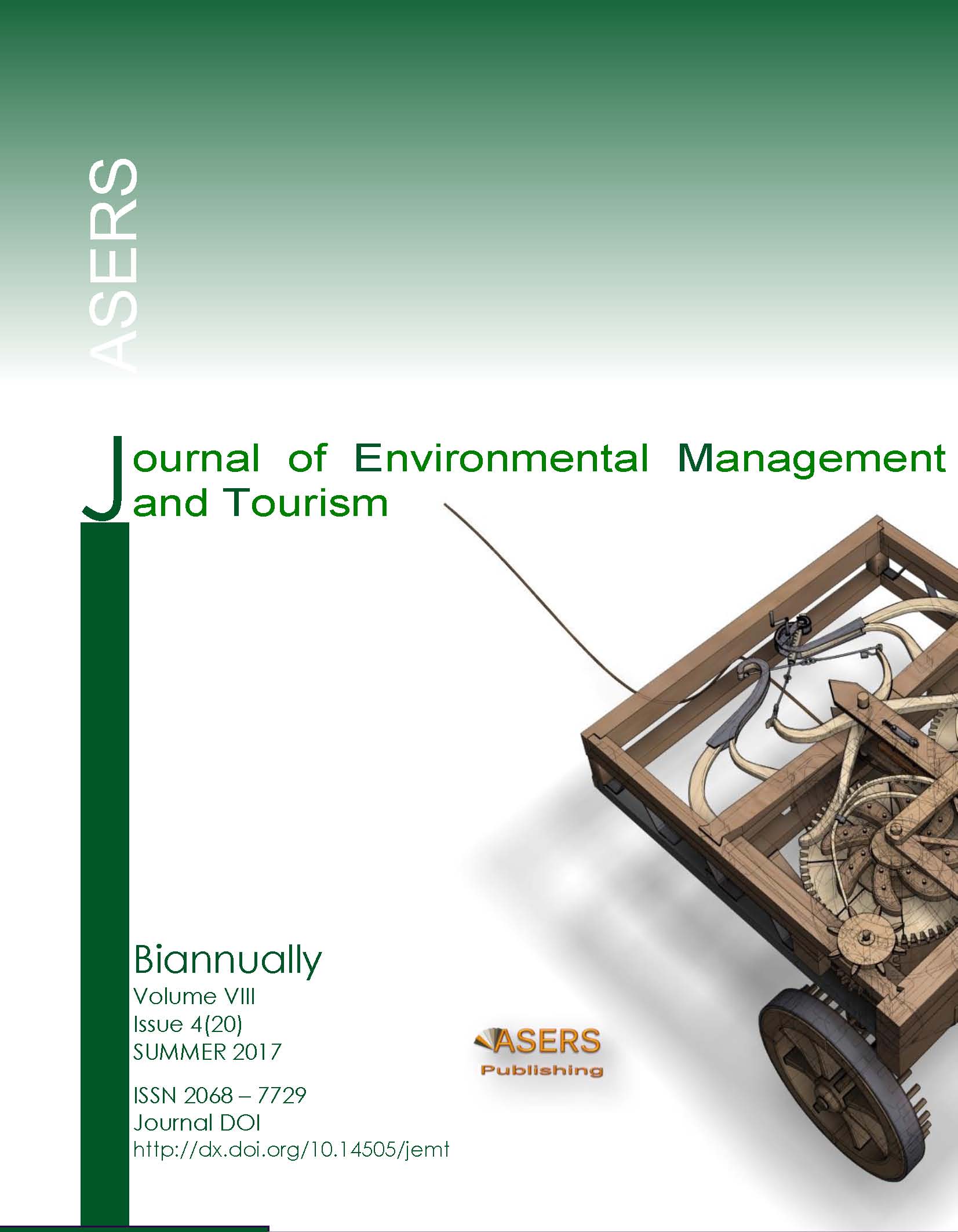Effectiveness of the Methods of Internal Financial Control as a Guarantee of Sustainability of Tourism Companies’ Development
Abstract
The purpose of the work is to study the effectiveness of the methods of internal financial control as a guarantee of sustainable tourism companies’ development in modern Russia. The authors perform comparative analysis of effectiveness of external measures and measures of internal financial control as to sustainability of tourism companies’ development and offer the algorithm of conduct of internal financial control in the interests of effective provision of tourism companies’ sustainability. As a result, the authors substantiate the necessity for search for highly-effective method of solving the problem of provision of sustainable tourism companies’ development in modern Russia and prove that such method is internal financial control, due to which self-limitation of financial risks from the tourism companies will allow keeping their financial indicators at the targeted level. Due to the interest in maximization of result and flexible and adaptive approach to finances management, these methods show high effectiveness as to provision of sustainability of tourism companies’ development.
References
[2] Carrillo, M., and Jorge, J.M. 2017. Multidimensional Analysis of Regional Tourism Sustainability in Spain. Ecological Economics, 140: 89-98.
[3] Da Silva Nogueira, S.P., and Jorge, S.M.F. 2017. The perceived usefulness of financial information for decision making in Portuguese municipalities the importance of internal control. Journal of Applied Accounting Research, 18(1): 116-136.
[4] Fan, P. et al. 2017. Nature-based solutions for urban landscapes under post-industrialization and globalization: Barcelona versus Shanghai. Environmental Research, 156: 272-283.
[5] Gorbanyov, V.A. 2011. Post-industrialization, sustainable development and education. Izvestiya Akademii Nauk, Seriya Geograficheskaya, (1): 122-128.
[6] Lin, M., Wu, X., and Ling, Q. 2017. Assessing the effectiveness of empowerment on service quality: A multi-level study of Chinese tourism firms. Tourism Management, 61: 411-425.
[7] Popkova, E.G., Popova, E.A., Denisova, I.P., and Porollo, E.V. 2017. New approaches to modernization of spatial and sectorial development of Russian and Greek regional economy. European Research Studies Journal, 20(1): 129-136.
[8] Przhedetskaya, N.V., and Shevelyova, V.V. 2016. Investment potential of the territory of priority development. Humanitarian and Socio-Economic Sciences, 3(1): 110-114.
[9] Ronzhina, M. 2016. Assessment of the internal financial control system's modification results. Economic Annals-XXI, 157(3-4): 118-120 .
[10] Sadovnikova, N. et al. 2013. Scenario forecasting of sustainable urban development based on cognitive model. Proceedings of the IADIS International Conference ICT, Society and Human Beings 2013, Proceedings of the IADIS International Conference e-Commerce 2013, pp. 115-119.
[11] Sarens, G., and D'Onza, G. 2017. The perception of financial analysts on risk, risk management, and internal control disclosure: Evidence from Belgium and Italy. International Journal of Disclosure and Governance, 14(2): 118-138.
[12] Ştefan-Sebastian, M. 2014. The paradigm shift? Roşia Montanǎ between industrialization and post-industrialization. International Journal of Industrial Engineering and Management, 5(1): 23-28.
[13] Vovchenko, N.G., Holina, M.G., Orobinskiy, A.S., and Sichev, R.A. 2017. Ensuring financial stability of companies on the basis of international experience in construction of risks maps, internal control and audit. European Research Studies Journal, 20(1): 350-368.
[14] Zach, F.J., and Hill, T.L. 2017. Network, knowledge and relationship impacts on innovation in tourism destinations. Tourism Management, 62: 196-207.
Copyright© 2025 The Author(s). Published by ASERS Publishing 2025. This is an open access article distributed under the terms of CC-BY 4.0 license.
